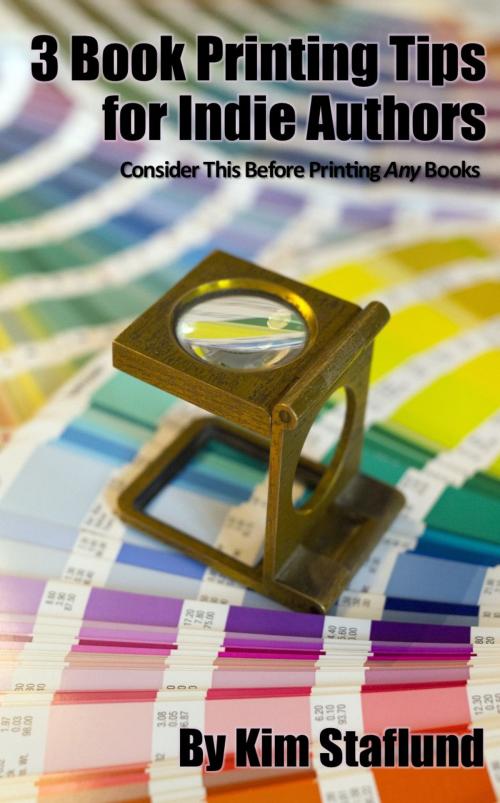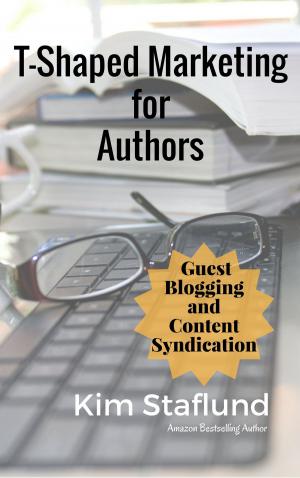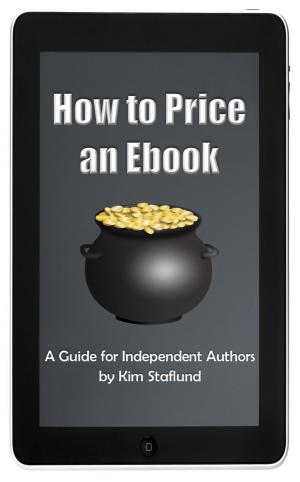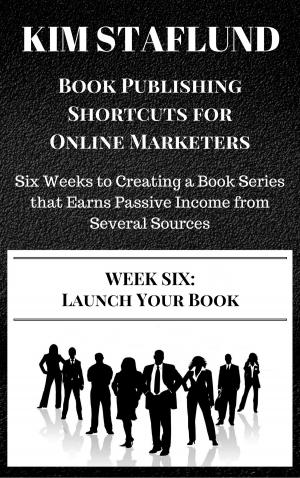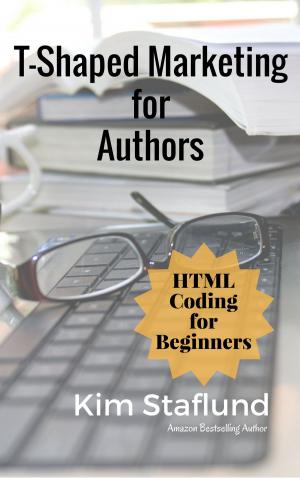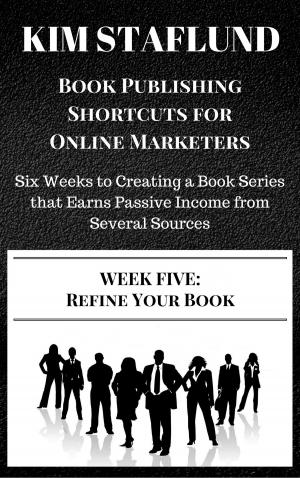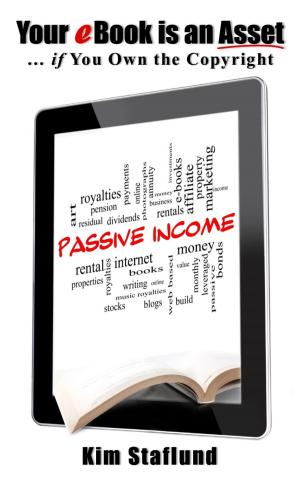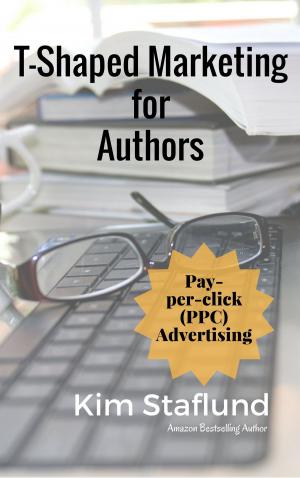3 Book Printing Tips for Indie Authors
Consider This Before Printing Any Books
Business & Finance, Business Reference, Business Writing, Nonfiction, Reference & Language, Language Arts, Writing & Publishing, Authorship, Reference, Guides & Handbooks| Author: | Kim Staflund | ISBN: | 9781988971186 |
| Publisher: | Polished Publishing Group (PPG) | Publication: | April 25, 2018 |
| Imprint: | Kim Staflund | Language: | English |
| Author: | Kim Staflund |
| ISBN: | 9781988971186 |
| Publisher: | Polished Publishing Group (PPG) |
| Publication: | April 25, 2018 |
| Imprint: | Kim Staflund |
| Language: | English |
Whenever prospective clients contact my company for a book publishing quote, they invariably request a book printing quote to go along with it. I tell them that to figure out your initial publishing costs—the professional editing, graphic design, proofreading, indexing, and administrative costs involved in publishing a book—a publisher will need to know five things:
-
How many words are included both inside your book’s interior and on its cover?
-
How many images/graphics are included both inside your book’s interior and on its cover?
-
Will your book have a colour or black and white interior? (If colour, will it be a full bleed?)
-
What trim size (e.g., 5 x 8", 5.5 x 8.5", 6 x 9", 8.5 x 11") do you want?
-
What format (e.g., paperback, case-wrapped hardcover, dust-jacketed hardcover) do you want?
Figuring out your book printing costs is even more involved than that. It is only once your book is fully formatted and you know all the above information plus the page count of the final-designed book that you can officially request a book printing quote. (The page count of a final-designed book is almost always different from the page count of your initial manuscript.)
There is much to think about, much to consider when it comes to book printing. I also ask each author, “How many books are you thinking about printing, and have you considered how and where you’re going to sell them?” Some people are puzzled by that question, assuming the publisher will actively sell your books for you. I published this FREE ebook for these individuals a while ago: Your Ebook is an Asset … if You Own the Copyright. The moral of the story is there’s no point in printing any books at all unless you have a clear idea of how to distribute them—successfully. Otherwise, you’ll end up wasting a lot of money in book printing costs followed by even more in storage costs.
For the authors who believe you’ll be able to print and sell direct to popular “bricks and mortar” book retailers, I highly recommend you download and read this additional FREE ebook: Why Traditional Bookstores Won’t Carry Your Book on Their Shelves … and Why That’s Okay. The truth is, if you want your book placed on the physical shelves of a traditional bookstore, you must play by the peculiar rules set by the traditional book supply chain. And, believe me, peculiar is the best word to describe these old rules … as I’m sure you’ll agree once you read the book. As well, most “bricks and mortar” booksellers (e.g., Chapters Indigo, Barnes & Noble, Waterstones, and Blackwell’s, et cetera) and libraries will only purchase their books through established distributors. They simply won’t deal with individual authors.
Add to all this the fact that printers can be finicky machines at times. Have you ever wondered why, sometimes, a colour image looks different on your computer screen than it does in a printed document? This has much to do with the way the colour file was created by the designer as well as the type of paper it is being printed on and the type of printer being used.
There is MUCH to consider with book printing. Before you engage in any type of book printing at all, read this book! It could save you a lot of time and money down the road. For those who still wish to print their books, this guide will help you to produce the best book printing result possible.
Whenever prospective clients contact my company for a book publishing quote, they invariably request a book printing quote to go along with it. I tell them that to figure out your initial publishing costs—the professional editing, graphic design, proofreading, indexing, and administrative costs involved in publishing a book—a publisher will need to know five things:
-
How many words are included both inside your book’s interior and on its cover?
-
How many images/graphics are included both inside your book’s interior and on its cover?
-
Will your book have a colour or black and white interior? (If colour, will it be a full bleed?)
-
What trim size (e.g., 5 x 8", 5.5 x 8.5", 6 x 9", 8.5 x 11") do you want?
-
What format (e.g., paperback, case-wrapped hardcover, dust-jacketed hardcover) do you want?
Figuring out your book printing costs is even more involved than that. It is only once your book is fully formatted and you know all the above information plus the page count of the final-designed book that you can officially request a book printing quote. (The page count of a final-designed book is almost always different from the page count of your initial manuscript.)
There is much to think about, much to consider when it comes to book printing. I also ask each author, “How many books are you thinking about printing, and have you considered how and where you’re going to sell them?” Some people are puzzled by that question, assuming the publisher will actively sell your books for you. I published this FREE ebook for these individuals a while ago: Your Ebook is an Asset … if You Own the Copyright. The moral of the story is there’s no point in printing any books at all unless you have a clear idea of how to distribute them—successfully. Otherwise, you’ll end up wasting a lot of money in book printing costs followed by even more in storage costs.
For the authors who believe you’ll be able to print and sell direct to popular “bricks and mortar” book retailers, I highly recommend you download and read this additional FREE ebook: Why Traditional Bookstores Won’t Carry Your Book on Their Shelves … and Why That’s Okay. The truth is, if you want your book placed on the physical shelves of a traditional bookstore, you must play by the peculiar rules set by the traditional book supply chain. And, believe me, peculiar is the best word to describe these old rules … as I’m sure you’ll agree once you read the book. As well, most “bricks and mortar” booksellers (e.g., Chapters Indigo, Barnes & Noble, Waterstones, and Blackwell’s, et cetera) and libraries will only purchase their books through established distributors. They simply won’t deal with individual authors.
Add to all this the fact that printers can be finicky machines at times. Have you ever wondered why, sometimes, a colour image looks different on your computer screen than it does in a printed document? This has much to do with the way the colour file was created by the designer as well as the type of paper it is being printed on and the type of printer being used.
There is MUCH to consider with book printing. Before you engage in any type of book printing at all, read this book! It could save you a lot of time and money down the road. For those who still wish to print their books, this guide will help you to produce the best book printing result possible.
